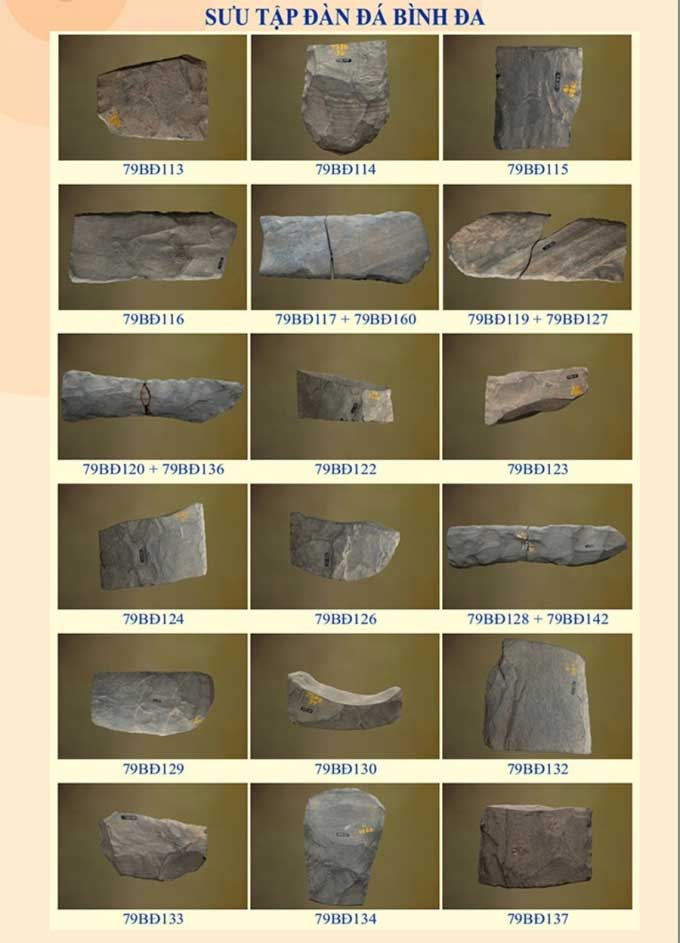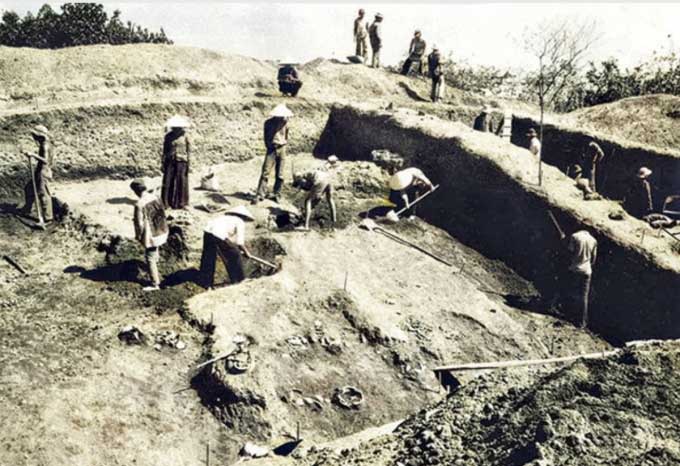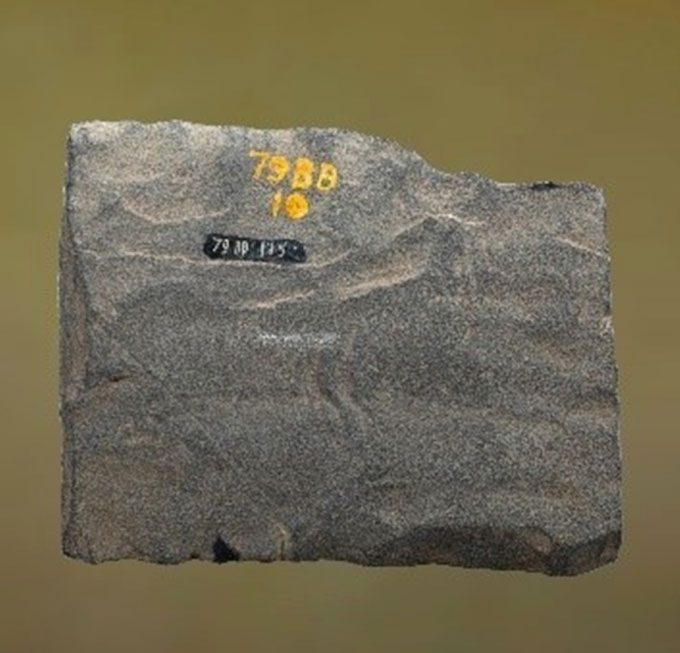The Bình Đa stone musical instrument collection dates back approximately 3,000 to 3,500 years and is recognized as the oldest stone musical instruments in the world.
The Bình Đa stone musical instrument collection is among 27 artifacts that Deputy Prime Minister Trần Hồng Hà signed into recognition as national treasures on January 30. The collection includes 51 items, consisting of five complete instruments and 46 fragments and sections, covered with a light gray patina.
In terms of shape, the stone instruments are long, flat, and straight, with a cross-section that is either rhomboid or triangular. The two parallel edges are concave, while the body surface is flat or concave with a narrow middle section. The ends are straight with a V-shape or have a curved arc. The manufacturing marks show a consistent chisel direction from the edge towards the center, with a depth of about 0.02-0.05 cm. The artifacts are currently preserved and stored at the Đồng Nai Museum.

Some instruments from the Bình Đa stone collection. (Photo: Đồng Nai Museum).
The Bình Đa stone musical instrument collection is a unique, indigenous product, the oldest of its kind in the world, according to the cultural heritage records of the Department of Cultural Heritage.
The artifacts were discovered during the excavation of the Bình Đa archaeological site (An Bình, Biên Hòa, Đồng Nai), which spans 7 hectares, in 1979. The instruments and fragments are scattered in clusters at depths of 55-90 cm beneath the hillside, mixed with broken pottery and stone tools. The collection includes five complete specimens, 15 end pieces, 20 body sections, and various fragments. In addition to the stone instruments, archaeologists found 13 clusters of charcoal, 140 clusters of pottery, 8 clusters of animal bones buried in ceramic pots, 1,670 stone tools, hundreds of animal teeth, and tens of thousands of broken pottery shards—evidence of an ancient village and community activities.
Samples of charcoal were taken from a depth of 1.9 m for C14 dating (radiocarbon dating) at the Institute of Prehistory and Archaeology, German Academy of Sciences. The results indicate an age of approximately 3,080 years, plus or minus 50 years, before Christ. Based on this, scientists determined that the Bình Đa stone instruments and the stone instrument artifacts in Vietnam date back between 3,000 and 3,500 years.

Excavation of the Bình Đa archaeological site in 1979. (Photo: EFEO).
Additionally, the dating of the artifacts is supported by research and comparisons with stone instruments found at other archaeological sites.
In 1949, road workers at Ndut Liêng Krak, Đăk Lăk discovered 11 intact stone instruments arranged closely together in a vertical position, measuring between 65 and 110 cm, showing signs of carving. Upon hearing this, Georges Condominas—a French ethnologist working at the École Française d’Extrême-Orient—visited and requested permission from the locals to take the artifacts to Paris for research. He brought the 11 stone instruments to the Musée de l’Homme (Museum of Mankind) and invited André Schaeffner—a French musicologist and ethnologist—to examine them. In the May 1951 issue of the Music Journal, they confirmed that these were the oldest stone musical instruments in the world, although their exact dating had not yet been established.
After 1975, archaeologists discovered hundreds of stone instruments in the mountainous regions of Khánh Sơn (Khánh Hòa), Bác Ái (Bình Thuận), and Tuy An (Phú Yên), varying in size and shape. This led researchers to establish two traditions of stone instruments: the Ndut Liêng Krak – Bình Đa tradition in the Southeast region and South Central Highlands, known for its exquisite craftsmanship, and the Khánh Sơn – Bác Ái tradition in the Khánh Hòa, Phú Yên, and Bình Thuận areas, characterized by a simpler manufacturing style and unstable shapes with rough carving marks.
In May 1981, after his encounter with the Bình Đa stone instruments, Georges Condominas added information about the artifacts in his book L’Exotique est quotidien, in its third edition.
The Bình Đa stone musical instrument collection is evaluated by the National Heritage Council as having unique forms and exquisite craftsmanship. Archaeologists believe Đồng Nai to be one of the centers for stone tool production: tools for production and various types of jewelry, achieving a high level of prehistoric craftsmanship in Southern Vietnam. The Bình Đa stone musical instrument collection embodies these achievements, created by experienced artisans.
The instruments are made from hornstone and speckled slate—producing resonant and clear sounds when struck, forming layers that can be easily split into long, flat, straight slates, suitable for the basic shape of the instruments. The ancient inhabitants of Đồng Nai applied skilled techniques in sawing and carving. This is demonstrated through direct and indirect carving marks, meticulous finishing steps, and various depths and sizes of carving, showing that each instrument underwent multiple carving processes.

Short, thin stones create clearer sounds. (Photo: Provided by the Department of Cultural Heritage).
The creation of these instruments serves as evidence of prehistoric residents generating sounds that enriched their cultural and spiritual life. Initially, the instruments were used to scare away birds and wild animals that threatened crops. Later, they were utilized in rituals to honor deities and celebrate the new harvest. Larger, thicker stones produced deeper tones, while shorter, smaller, thinner pieces produced higher and clearer sounds.
The treasure records affirm: “The Bình Đa stone musical instrument collection is an original, unique, and exemplary artifact with clear origins and provenance through archaeological excavation, crafted on-site, possessing historical and cultural value, and is the oldest musical instrument. The artifacts meet all criteria for recognition as a national treasure.”




















































